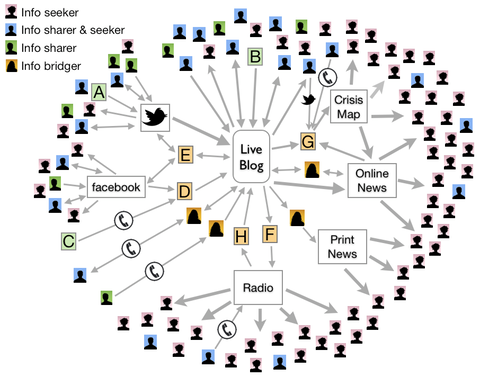
Social media “stitches” together other forms of communication, giving an entry point to understand the larger information landscape that takes shape during a crisis. This diagram maps the relationships between different forms of communication after Hurricane Irene struck in rural New York in 2011.
One feature of crises is that people naturally come together to respond. Such emergent responses typically happen quickly and (just as the disaster itself) unexpectedly. This makes it challenging for researchers to observe and consequently understand how such collaborations form and what makes them work. Now, social media data can give us a window into the micro-interactions that take place to form and sustain emergent collaborations during crises. When combined with other data such as contextual interviews, we can model how the interactions we observe in social media fit into the larger context of a particular event.
Since 2011, we have been constructing an empirically-derived model of how information needs were met within one rural community that was impacted by Hurricane Irene. We follow the flow of specific information needs, the platforms through which each need was mediated, and the work involved to address each specific need, including reaching out to specific audiences across gaps in the telecommunications infrastructure.
With this level of detail, we are able to 1) differentiate the many kinds of situated knowledge and expertise that came into play and observe the different kinds of micro-collaborations that formed in relation to meeting information needs.


